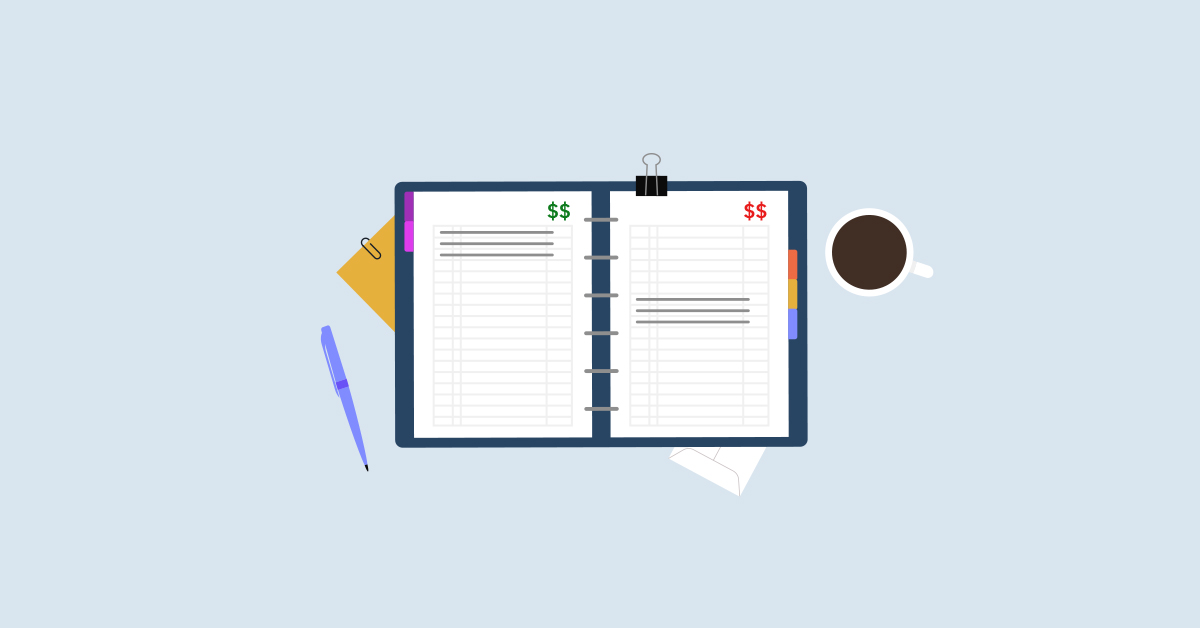
Are you a small business owner looking to understand general ledger accounting? If so, you’re in the right place. In this guide, we’ll provide you with an introduction to where general ledgers fit into small business accounting.
And, with the help of several accounting experts, we’ll show how they can help you manage your business’s finances. This article will cover:
- What a general ledger is
- The five typical sections of the general ledger
- Common general ledger accounts
- How general ledgers and balance sheets differ
Let’s start with a simple explanation.
Our free guide will help you understand the kind of point-of-sale system you need to run your business efficiently.Searching for the right POS system?
What is a general ledger?
A general ledger is an accounting record of all financial transactions in your business. This includes debits (money leaving your business) and credits (money coming into your business). These transactions can occur across areas such as revenue, expenses, assets and liabilities.
Good to know
|
Why do businesses need general ledgers?
“General ledgers are maintained to make a balance sheet, file taxes and most importantly, view all your information in one place,” said Salman Rundhawa, founder and CEO of FilingTaxes. “A general ledger (GL) is a parent copy of all the financial transactions of a business. All other necessary accounting formats seek information from it,” he added.
- General ledgers can be used to track expenses, revenue and areas where a business may be overspending or underperforming.
- A well-maintained general ledger is critical for any business, as it provides transparency and accountability for tax purposes.
- Without a general ledger, it would be difficult for businesses to manage their finances effectively.
What is another name for the general ledger?
Sometimes, the general ledger is also known as the book of final entry.
What are the five main general ledger sections?
“[The general ledger] is comprised of assets, liabilities, owner’s equity, revenue, cost of goods sold and expense accounts,” said New York-based small business bookkeeper Barbara Cross.
“As transactions in your business occur, they are noted in the general ledger under each account using double-entry accounting. It’s essential to have an accurate accounting of all transactions so that financial statements are correct. This is often the role of a bookkeeper or other accounting staff,” said Cross.
Let’s take a closer look at what each of these accounts mean.
- Assets: Anything of value owned by the business. This could include cash, inventory, equipment or real estate. For example, if your business has $10,000 in cash and $50,000 in inventory, its total assets would be $60,000.
- Liabilities: Any debts or money owed by the business. This might include loans, credit card balances or accounts payable. For example, if your business has a $5,000 loan and $2,500 in credit card debt, its total liabilities would be $7,500.
- Equity: The difference between assets and liabilities. It represents the ownership stake that the business owner has in the company. In the examples above, the business’s equity would be $60,000 (assets) – $7,500 (liabilities) = $52,500.
- Revenue: The income generated by your business. This can come through the sales of goods or services, interest income and dividends from investments. Revenue is often referred to as the “top line” because it’s the first thing listed on a company’s income statement.
- Expenses: What you spend to pay for operating costs such as rent, utilities, salaries and inventory. Retail businesses may break out this section into Cost of Goods Sold (COGS), to understand how much they are spending to source, store and sell their products.
What are the five main general ledger accounts?
General ledger accounts can vary by industry, business structure and size, said Earl T. Murray III, president and CEO of The Entrepreneur’s Accountants. For larger businesses, they may include:
- Payroll expenses
- Mortgage payments
- Commercial rent
- Contract labor
- Professional fees
Although there are many possible accounts in a general ledger, they can all usually be classified into permanent and temporary categories. Let’s look at some of the accounts small businesses may use in the general ledger.
1. Accounts receivable (AR)
Accounts receivable (AR) refers to money that is owed to a company by its customers. The accounts receivable process begins when a customer purchases goods or services from a company and is issued an invoice. The customer usually has a set amount of time to pay the invoice, such as 30 days.
2. Accounts payable (AP)
Accounts payable is the money a company owes to its suppliers and vendors for products and services purchased on credit. When a company buys something from a vendor, it typically doesn’t pay for it immediately. Instead, it pays for it over time, usually within 30 days.
3. Owner’s equity
Owner’s equity is the portion of the business’s assets that you or your shareholders own. When your business records revenue from sales, this will increase owner’s equity because it means that the company has earned more money. On the other hand, if the company incurs expenses, this will decrease the owner’s equity because it means there’s less money available for you to draw out.
4. Revenue accounts
Revenue accounts in the general ledger are typically divided into categories, such as sales and interest. There may also be subcategories. For example, sales may be further divided into retail sales and wholesale sales, or foreign sales and domestic sales.
5. Expense accounts
Your operating expenses are those you incur to run the business. These are typically recorded in the general ledger as they are incurred. Your general ledger might break these down into accounts for rent, merchant fees, software subscriptions, telephone and internet, cleaning, and so on.
General ledger vs balance sheet: what’s the difference?
Here’s how Rundhawa explains the difference between the general ledger and balance sheet.
“A general ledger (GL) is a parent copy of all the financial transactions of a business. All other necessary accounting formats seek information from a GL. A balance sheet is an accounting tool that presents financial and accounting data related to assets, liabilities and equity.”
Kirsha Campbell (CPA), of the Cash Lab, sees the balance sheet as a picture of your business at a point in time. “It shows what the business owns and owes. It really shows the net position of the business at a point in time. It reflects the true value of the business at a point in time or the net worth of the business. It is useful for various stakeholders.”
Andrew Griffith, a certified public accountant (CPA) and associate professor of accounting at Iona University, echoed these sentiments. He said the balance sheet contains the accounts creditors and investors are often interested in. And that’s because it can “give insight into the resources available to a firm and its obligations to others.”
Your general ledger, on the other hand, should only be used internally. “It should not be publicly accessible,” said Griffith, “as it contains detailed, transaction-specific information.”
Where do small businesses go wrong with general ledgers?
Campbell said small businesses may record transactions incorrectly on the general ledger, which impacts reporting and decision-making. “For example, recording a vehicle as an expense item when it is an asset item.”
One way to avoid errors is to use a POS system like Lightspeed Retail, which connects with accounting software to automatically sync data. To learn more about what Lightspeed Retail can do for your business, talk to an expert today.
Editor’s note: Nothing in this blog post should be construed as advice of any kind. Any legal, financial or tax-related content is provided for informational purposes only and is not a substitute for obtaining advice from a qualified legal or accounting professional. Where available, we’ve included primary sources. While we work hard to publish accurate content, we cannot be held responsible for any actions or omissions based on that content. Lightspeed does not undertake to complete further verifications or keep this blog post updated over time.

News you care about. Tips you can use.
Everything your business needs to grow, delivered straight to your inbox.



